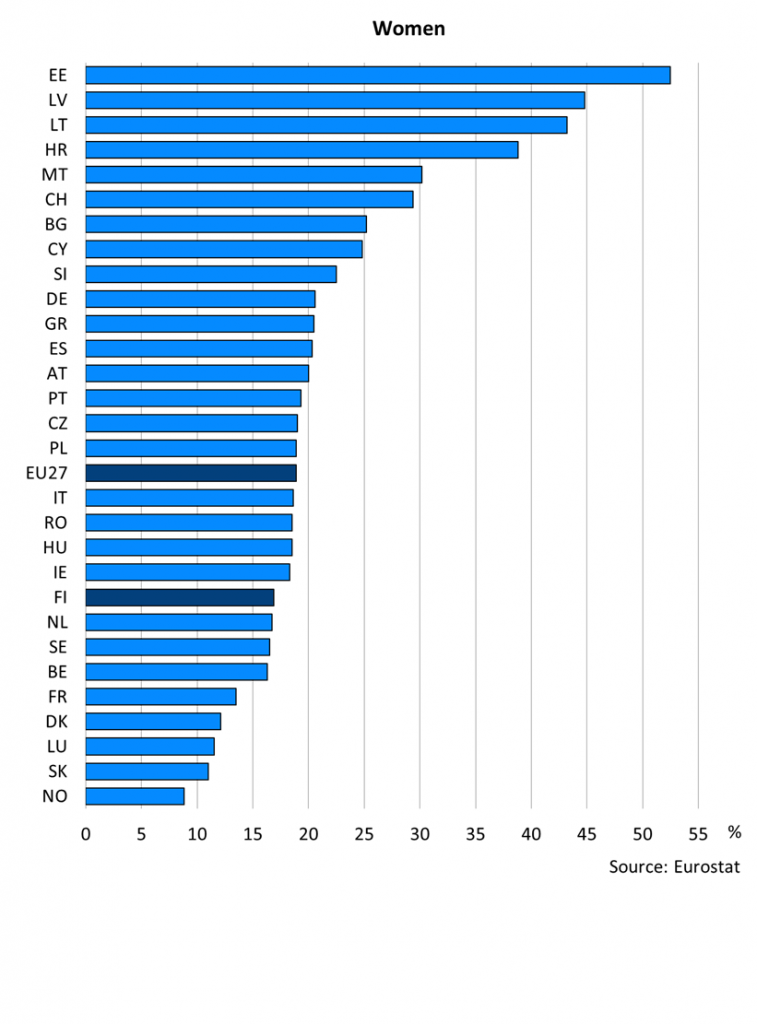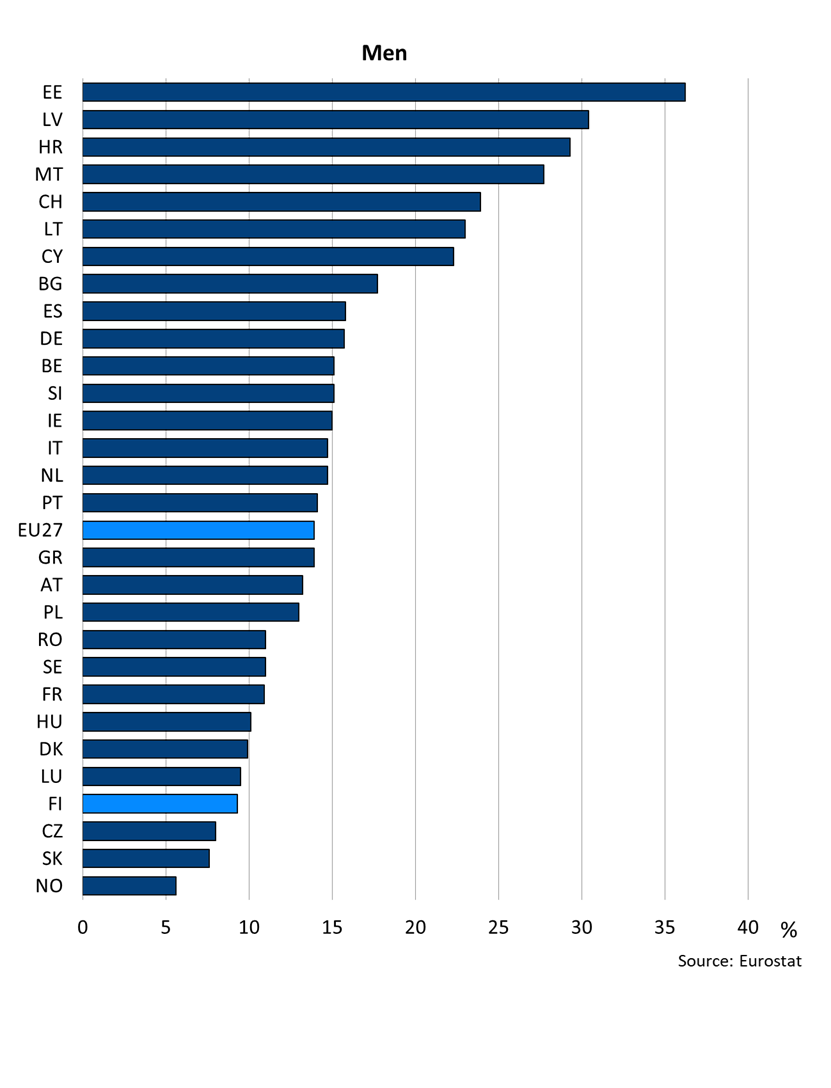Pensioner Poverty
According to Eurostat’s statistics, women’s poverty is considerably more common than men’s throughout Europe. In Finland, the share of low-income women and men who have turned 65 of the overall population of the same age is lower than in the EU27 countries on average.
Sweden, Norway and Denmark, for example, have lower proportions of low-income earners than the European average. In general, the differences between EU countries are considerable.
Share of low income people aged 65 or more (%) of the population of the same age in 2023


Low-income people are persons whose income in the statistical year is under 60 per cent of the national median income. Income refers to the monetary income after tax, which includes earnings from work and income transfers.
Poverty at different income limits

Poverty can also be examined at different income limits. In Finland, few people have an income that is less than 40 or 50 per cent of the national median income. However, if the poverty limit is set at 60 or 70 per cent of the median income, the situation changes. In such cases, the share of low-income people in the population group aged 65 or over grows. In EU, poverty is defined as 60 per cent of the median income.
The figure below shows the share of low-income people at different income limits in the population group aged 65 or older. The data stems from the year 2020. Eurostat uses the term AROP indicator (at risk of poverty) of this. In EU, the AROPE indicator (at risk of poverty or social exclusion) is monitored to review not only persons at risk of poverty but also materially depriving people or people living in a household with a very low work intensity. In other words, the indicator has three dimensions of poverty.
Read more: